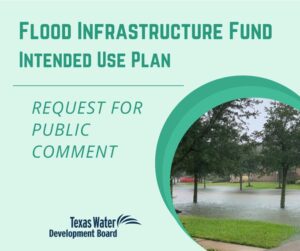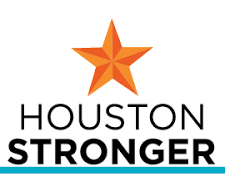
This article is based on the comments submitted earlier this year.
West Houston Association, as a founding member of Houston Stronger, a regional coalition dedicated to reducing flood risk and enhancing resilience, is calling on the Texas Water Development Board (TWDB) to make key refinements to the Flood Infrastructure Fund (FIF) SFY 2024-2025 Intended Use Plan (IUP) as well as subsequent future versions. Our recommendations focus on addressing barriers to equitable funding and ensuring the program supports all Texas communities effectively. Specifically, we urge the TWDB to replace the Memorandum of Understanding (MOU) requirement with a notification standard, eliminate or modify the Benefit-Cost Ratio (BCR) threshold, and increase the grant-to-loan ratio to enable greater participation from smaller and under-resourced jurisdictions.
MOU Requirements
The draft IUP includes a requirement for an MOU between political subdivisions as part of the application process. While intended to encourage coordination, this requirement poses significant challenges, especially in large metropolitan areas with numerous jurisdictions. Requiring multiple agreements can be excessively cumbersome, delaying critical projects. Worse, a single jurisdiction’s refusal to sign could effectively block a project, undermining regional flood resilience efforts.
Instead, we propose a notification-only standard, which would streamline coordination while maintaining inclusivity. Language already included in the draft IUP—allowing notification and documentation of non-participation to fulfill the requirement—provides a solid foundation. However, further clarity is needed to define what constitutes “adequate” and “ample” notice and to specify acceptable evidence of notification. These changes would ensure applicants understand and can meet the requirements without unnecessary hurdles.
 Benefit-Cost Ratio (BCR)
Benefit-Cost Ratio (BCR)
The draft IUP’s reliance on a BCR greater than 1 as a threshold for funding eligibility creates an additional barrier, especially for low- and moderate-income communities. Lower property values in these areas often reduce the calculated benefits of flood mitigation projects, making it difficult to meet this requirement.
This approach is not mandated by Senate Bill 7, the legislation that established the FIF. Furthermore, its rigid application exacerbates inequities, excluding communities that face some of the greatest flood risks simply because they lack high property values. Houston Stronger recommends reevaluating the reliance on BCR>1 to align with the legislative intent and ensure equitable access to resources for all communities, regardless of income level.
Grant-to-Loan Ratio
Grants are a critical funding tool for flood infrastructure projects, particularly for small and rural communities that lack the financial capacity to take on substantial loans. The current grant-to-loan ratio in the draft IUP may not sufficiently address these needs. Unlike water infrastructure projects, which can generate revenue through user fees to repay loans, flood mitigation projects do not create revenue streams. This fundamental difference means that many communities cannot rely on loans to finance these projects.
A higher proportion of grant funding is essential to enable broader participation in the FIF program. By increasing the availability of grants, the TWDB can ensure that small and under-resourced jurisdictions can access the resources they need to protect their residents from flooding. This adjustment would make the program more inclusive and effective in addressing flood risks across Texas.
Conclusion
The West Houston Association, as part of Houston Stronger, appreciates the TWDB’s efforts to advance flood mitigation and resilience through the Flood Infrastructure Fund. However, the current draft IUP could be improved to better reflect the needs of all communities, particularly those most vulnerable to flooding and with limited financial capacity. We strongly urge the TWDB to replace the MOU requirement with a notification standard, eliminate or modify the BCR>1 threshold, and increase the grant-to-loan ratio to reflect the unique challenges of flood infrastructure projects. Looking to the future, we would also suggest considering an annual program rather than once every-two years.
These changes will ensure the FIF program fulfills its mission of providing equitable and efficient flood mitigation funding, protecting all Texans from the risks of flooding.

This piece was written in collaboration with Houston Stronger based on previously submitted public comments. Special thanks to Houston Stronger Executive Director Christina Lindsay and WHA Flood Control and Drainage Committee Vice Chair Alan Black (Quiddity).
